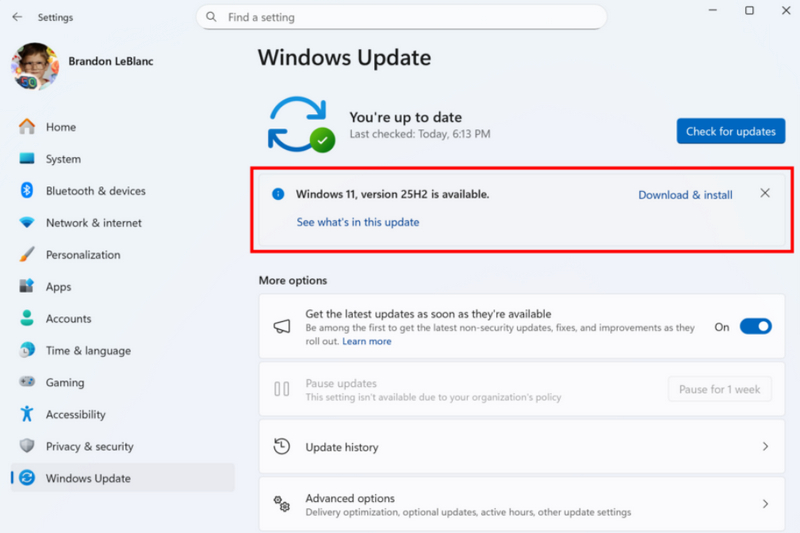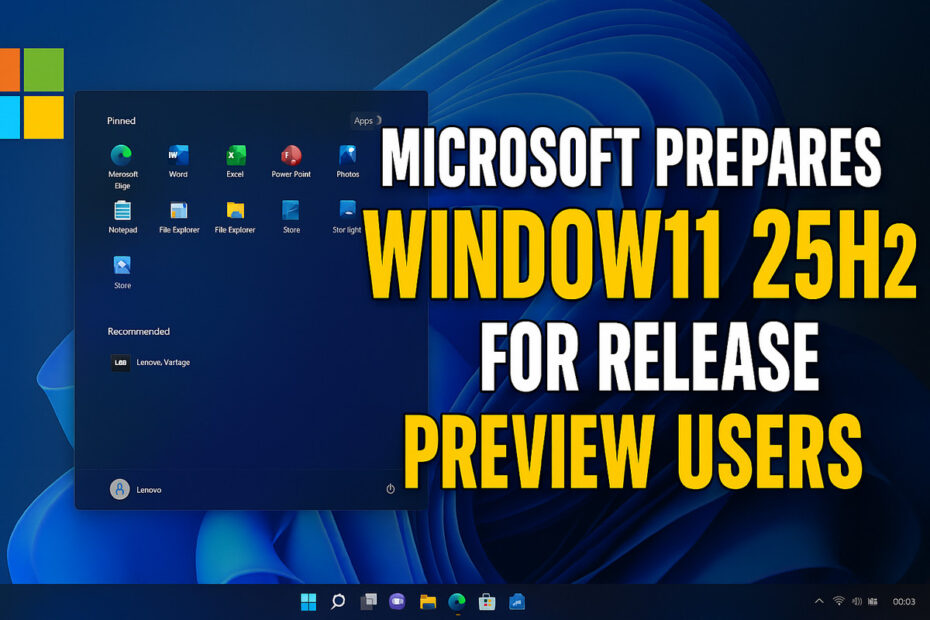Microsoft has just hit a major milestone for Windows 11, pushing its next annual feature update version 25H2 into the Release Preview Channel. This is the final stage of public testing, meaning the build is now stable and almost ready for its wide-scale debut later this year.
For those enrolled in the Insider Program’s Release Preview Channel on compatible hardware, the update is now available through Windows Update. The rollout will be phased, starting with a small subset of devices before expanding. Soon, you’ll also be able to do a clean install using standalone ISO files.
Table of Contents
What is the 25H2 Update?

Don’t expect a massive, flashy overhaul. Technically, this update is what’s known as an enablement package. The core components for 25H2 are already on your machine if you’re running version 24H2. This small package simply “flips the switch” to activate them, which means the update is incredibly fast and requires only a quick restart instead of a lengthy, disruptive installation.
Because it shares a servicing branch with 24H2, the build number simply increments, moving from the 26100 series to starting at Build 26200.
So, What’s New?
(Spoiler: It’s Mostly Under the Hood)
For the average user, the day-to-day experience will feel virtually identical to 24H2. That’s because most of the new features and improvements have been trickling out over the past year via regular monthly updates.
The primary function of this release is to reset the security update lifecycle, granting supported systems an additional 24 months of crucial monthly security patches. It also includes a few backend changes:
- Legacy Tool Retirement: PowerShell 2.0 and the legacy Windows Management Instrumentation Command-line (WMIC) tools have been fully removed.
- Enterprise Admin Control: A significant change for IT departments: administrators can now use Group Policy or Mobile Device Management (MDM) CSPs to automatically remove specific pre-installed Microsoft Store apps across their organization.
This rollout illustrates Microsoft’s shift towards a more seamless update model. By using shared branches and enablement packages, they drastically reduce downtime and simplify deployments for everyone, from individual users to massive corporations.
Businesses can validate and deploy this update through their standard channels like Windows Update for Business and Windows Server Update Service (WSUS), with support in the Azure Marketplace and downloadable media coming soon. It’s all about making updates less of a chore and more of a background process, keeping everyone secure and up-to-date with minimal fuss.
Maybe you would like other interesting articles?

